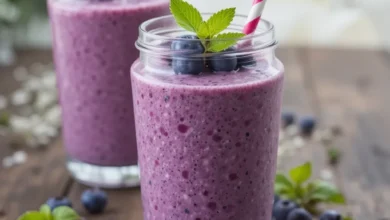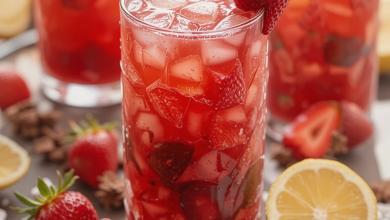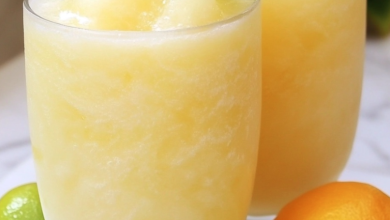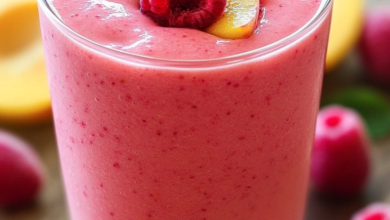Creamy Pineapple Mousse: A Symphony of Tropical Elegance
In the world of desserts, few creations strike the perfect balance between indulgence and refreshment quite like a well-made mousse. It’s ethereal, light as air, yet profoundly rich in flavor. While chocolate and vanilla often steal the spotlight, there’s a tropical contender that deserves your attention: creamy pineapple mousse. This dessert is a revelation a sunny, vibrant, and incredibly smooth concoction that transports your taste buds to a paradise island with every spoonful.
This comprehensive guide will walk you through everything you need to know to create the perfect creamy pineapple mousse. We’ll explore a foolproof recipe, delve into the science of its texture, uncover professional tips for success, and discuss exciting variations to suit every palate.
Why Pineapple Mousse? The Allure of the Tropical Treat
Pineapple is more than just a sweet fruit; it’s a complex ingredient. Its flavor profile is a dynamic mix of bright acidity and sugary sweetness, making it an ideal candidate for a dessert that is both invigorating and satisfying. Unlike heavier, cream-based desserts, pineapple mousse feels like a guilt-free luxury. It’s the perfect finale to a summer barbecue, a elegant dinner party staple, or a simple treat to brighten a weekday evening.
The creamy element, usually from whipped cream or a custard base, tames the pineapple’s sharpness, creating a harmonious and sophisticated blend. The result is a dessert that is simultaneously light and decadent, fruity and creamy, simple and impressively elegant.
The Secret to Success: Understanding the Pineapple Problem
Before we jump into the recipe, it’s crucial to address the one challenge pineapple presents: bromelain.
Bromelain is a powerful enzyme found in fresh pineapple that breaks down proteins. This is why your tongue can feel tingly after eating fresh pineapple, and it’s also why if you add fresh pineapple to gelatin or dairy, it can prevent setting, leaving you with a watery, separated mess.
The solution is simple: we must neutralize the bromelain. This can be achieved in one of two ways:
- Cooking: Gently heating the pineapple puree deactivates the enzyme.
- Using Canned Pineapple: Canned pineapple is already cooked during the canning process, making it a bromelain-free and convenient option.
For the deepest, freshest flavor, we recommend using fresh pineapple and briefly cooking it into a puree.
The Ultimate Creamy Pineapple Mousse Recipe
This recipe is designed for success, prioritizing flavor and that signature airy texture.
Yield: 6 servings
Prep Time: 20 minutes
Chill Time: At least 4 hours
Ingredients:
- 2 cups fresh pineapple, chopped (or one 20 oz can of pineapple chunks in juice, drained)
- 1/4 cup granulated sugar (adjust to taste based on pineapple sweetness)
- 1 tablespoon fresh lemon juice
- 1 teaspoon vanilla extract
- 1 cup heavy whipping cream (very cold)
- 2 tablespoons powdered sugar
- 1 packet (2 1/4 teaspoons) unflavored gelatin
- 1/4 cup cold water
- Pinch of salt
Optional Garnish:
- Toasted coconut flakes
- Thin pineapple slices
- Mint leaves
- Crushed digestive biscuits or graham crackers
Instructions:
- Prepare the Pineapple Puree: If using fresh pineapple, place the chunks in a saucepan with the granulated sugar and lemon juice. Cook over medium heat for 8-10 minutes, until the pineapple is soft and fragrant. Transfer to a blender and blend until completely smooth. Let it cool to room temperature. If using canned pineapple, simply blend the drained chunks with the sugar and lemon juice until smooth.
- Bloom the Gelatin: In a small bowl, sprinkle the gelatin over the 1/4 cup of cold water. Let it sit for 5-10 minutes until it becomes spongy and solid (this is called “blooming”).
- Melt the Gelatin: Gently heat the bloomed gelatin. You can do this by placing the bowl in a microwave for 10-15 seconds until it becomes a clear liquid, or by setting the bowl over a pot of simmering water (double boiler method). Do not let it boil.
- Combine and Cool: Whisk the liquid gelatin and vanilla extract into the room-temperature pineapple puree until fully incorporated. At this stage, you can strain the puree through a fine-mesh sieve to ensure it’s perfectly smooth a chef’s secret for an ultra-silky mousse.
- Whip the Cream: In a separate, chilled bowl, whip the cold heavy cream with the powdered sugar and a pinch of salt until it reaches medium-stiff peaks. Be careful not to overwhip it into butter.
- Fold it Together: This is the most critical step for a light texture. Add about one-third of the pineapple mixture to the whipped cream and gently fold it in with a spatula to lighten the base. Then, carefully fold in the remaining pineapple mixture until no white streaks remain. Be gentle to preserve the air bubbles in the cream.
- Chill and Set: Divide the mousse into serving glasses or bowls. Cover with plastic wrap and refrigerate for at least 4 hours, or preferably overnight, to allow it to set completely.
- Serve: Before serving, garnish with toasted coconut, a twist of pineapple, or a mint leaf for a professional touch.
Pro Tips for a Flawless Mousse
- Chill Your Bowl: For best results, chill your mixing bowl and whisk attachment in the freezer for 15 minutes before whipping the cream. Cold equipment helps the cream whip faster and higher.
- Taste and Adjust: After making the puree, taste it! Tropic pineapples vary in sweetness. Adjust with more sugar or lemon juice to achieve your perfect balance.
- The Fold Technique: Use a large rubber spatula and cut through the center of the mixture, sweep across the bottom, and fold over the top. Rotate the bowl as you go. This incorporates the mixtures while deflating the cream as little as possible.
- For a Lighter Version: You can fold in a stiffly whipped egg white (ensure it’s pasteurized if you have concerns) at the very end for an even airier, foam-like texture.
Creative Variations to Explore
The basic recipe is a canvas for your creativity:
- Pina Colada Mousse: Add 2-3 tablespoons of cream of coconut to the puree and garnish with toasted coconut and a dark rum drizzle (for adults).
- Mango-Pineapple Mousse: Replace half of the pineapple with ripe mango for a different tropical twist.
- Vegan Pineapple Mousse: Use full-fat canned coconut cream (chilled) instead of dairy cream. The gelatin can be replaced with agar-agar, following package instructions for setting.
- Layered Dessert: Create a parfait by layering the mousse with crumbled vanilla cake, coconut gel, or a passionfruit curd.
Serving and Presentation
Presentation elevates this simple dessert to a restaurant-quality experience. Serve it in clear glasses to show off its beautiful layers if you’ve made a parfait, or in elegant coupe glasses. The contrast of the yellow mousse with green mint and brown toasted coconut is visually stunning.
Conclusion: Your New Go-To Dessert
Creamy pineapple mousse is more than just a recipe; it’s a experience. It’s the effortless elegance of a no-bake dessert combined with the joyful, sunny flavor of the tropics. By understanding the simple science of bromelain and mastering the technique of folding, you can consistently create a dessert that is sure to impress. So, break out your whisk, grab a ripe pineapple, and get ready to whip up a cloud of tropical delight. Your journey to the perfect creamy pineapple mousse starts now.



